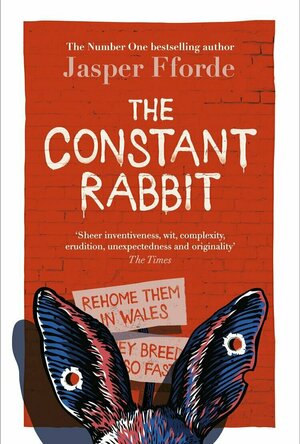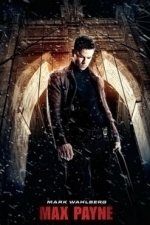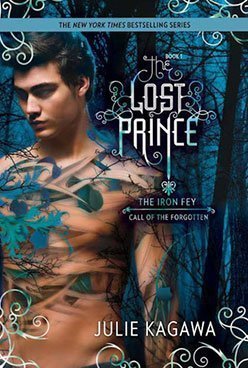
Richard Patterson - Matters of Life and Death
Paul Moorhouse, Matt Price, Jane Neal and James Cahill
Book
Matters of Life and Death is a limited-edition publication documenting the remarkable new and recent...
Janeeny (200 KP) rated The Constant Rabbit in Books
Jul 10, 2020
I’m a big fan of authors like Terry Pratchet, Robert Rankin, Jasper Fforde, and Tom Holt. Books written within the realms of the ridiculous, that make me smile, definitely get my vote. So when a new book by Jasper fforde comes out, about a society of anthropomorphised rabbits, I’m definitely on board.
The premise is really interesting. Decades ago an unexplained event led to a bunch of rabbits morphing into humanoid form. They’re still rabbits in essence, but just the size of humans and with the ability of human speech. Well these rabbits bred like the proverbial rabbit, and cut to present day where there are millions of anthropomorphised rabbits living in Britain. Still being the ‘sub-species’ though they live and work in a lesser capacity than most humans.
This book is a very intricately woven story about the prejudices that the rabbits face, their efforts to overcome it, and their ultimate acceptance that things are never going to change.
Interspersed with the usual Fforde humour, where Humans are often referred to as ‘Fudds’ (a reference to Elmer Fudd), and a detailed description of the ‘Beatrix potter’ clothing range. There are also some harsh ‘close to the bone’ observations. Our protagonist works for a certain government department as a ‘spotter’, his job is to go through the database and identify certain rabbits. It’s a special skill, as to most humans, ‘All rabbits look the same’.
At a time when the subject of racism is very much in the forefront of everyones minds and in the news every day, this is an interesting book. He’s not making light of the subject of racism, far from it. His jibes are more at the state of the UK and it’s various political and ethical issues.
For example, in the book there is a group called ‘TwoLegsGood’ a supremacist factor. This group, on finding out that a certain rabbit has committed an act that THEY consider a crime, drag him from his house in the middle of the night and ‘jug’ him! This involves upending him in a forty-gallon drum of cheap gravy that had been seasoned with bay leaves, celery, thyme, juniper berries and red wine (I see you smiling there!) It is later discovered to be a case of mistaken identity with TwoLegsGood showing no remorse, under the presumption he’s a rabbit and is bound to be guilty of something.
Funny right?
Now take out the fact the victim is a rabbit and the drum is filled with cheap seasoned gravy, and it’s not so funny anymore, it’s actually a serious and reprehensible crime.
That is the beauty of satire and the genius of this book.
A well thought out piece of satiric writing tackling the ‘hot potato’ subject of race. A light-hearted read with a serious message.

Solar Walk - Explore Space and Planets System 3D
Education and Entertainment
App
Solar Walk is an amazing 3D model of our solar system bringing the universe to the palm of your hand...
Gareth von Kallenbach (980 KP) rated Max Payne (2008) in Movies
Aug 14, 2019
Max has become a creature of the night, and spends his off hours patrolling the grimy sections of the city looking for clues about the death of his wife and taking on all manner of the cities criminal elements to get to the truth which has so long eluded him.
While attempting to gain information from a former snitch, Max is introduced to the Natasha Sax (Olga Kurylenko), and her sister Mona (Mila Kunis). The fact that Mona is suspicious of Max from the start is of little concern to Natasha who follows Max back to his apartment and attempts to seduce him. Max quickly spurns her advances which causes Natasha to leave his apartment angry and unbeknownst to Max, steals his wallet in the process. Shortly after leaving Max’s apartment, Natasha is brutally murdered and when Max’s wallet is found at the scene, he becomes the lead suspect in the murder.
Soon after learning from his former partner that Natasha’s dead may be linked to the death of Max’s wife, Max becomes the subject of a city wide manhunt when his partner turns up dead which is attributed to Max going over the edge.
In a race against time, Max must get to the bottom of the deaths as well as solve his family’s murder and clear his good name. This will not be easy as Max must face the resources of a gigantic corporation as well as a crazed drug lord, and his colleagues on the police force.
Based on the popular video games series from Remedy Entertainment and 3D Realms, Max Payne takes some of the games more prominent characters and themes and creates a new storyline. The bullet time ability that Max had in the game has been omitted and replaced with a few gun battles that are shot at times in slow motion, such as a well staged battle in an office building.
While the storyline and character development may be lacking, the film does a decent job of capturing the look and tone of the games, and Wahlberg is solid as the tormented lead character.
Backed by a solid supporting cast which includes Beau Bridges, Chris O’Donnell, and Ludacris, “Max Payne” is an enjoyable if flawed movie experience that makes up for its shortcomings with solid visuals and some great gun battles that come late in the film.
The picture and sound quality of the movie are very crisp and if you have the chance to enjoy the film in surround sound and HDTV I would highly suggest it.
The bonus features are very good and there is a great graphic book feature that delves more into the character of Max Payne’s wife and the events leading up to her murder.
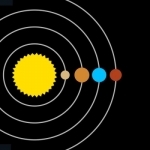
Solar Walk Ads+ Explore Space and Planets System
Reference and Entertainment
App
Solar Walk is an impressive wealth of information about our solar system, presented as an amazing 3D...
Sophia (Bookwyrming Thoughts) (530 KP) rated The Lost Prince (The Iron Fey: Call of the Forgotten, #1) in Books
Jan 23, 2020
<ul>
<li>The Iron King</li>
<li>Winter's Passage*</li>
<li>The Iron Daughter</li>
<li>The Iron Queen</li>
<li>Summer's Crossing*</li>
<li>The Iron Prophecy*</li>
</ul>
*Also in The Iron Legends
For those who have followed Meghan's journey from the beginning, remember that cute little boy who was kidnapped and replaced by a changeling? He was later rescued by Meghan. That little boy was Ethan Chase, and 12 years later, after trying to avoid the fey at all costs, the fey comes for him again. All he wants is a normal life learning Kali and be an ordinary guy, even if he can see the Fey.
<div class="separator" style="clear: both; text-align: center;"><a style="margin-left: 1em; margin-right: 1em;" href="http://1.bp.blogspot.com/-AMMqT9VfbJ0/UI81aqQJBbI/AAAAAAAAAkw/0SoygN2dErk/s1600/Snoopy_happy_dance.jpg"><img src="http://bookwyrmingthoughts.bookblog.io/wp-content/uploads/sites/317/2012/11/Snoopy_happy_dance.jpg"; border="0" /></a></div>
I was doing this all day.
*Happy Dance*
Nope. The entrance to the amazing Faery World woven in the awesome works of Julie Kagawa was not randomly picked 2 years ago when I first spot the book at the library. I just made a beeline for it. Maybe not literally a beeline it was actually in Book Battle Club, which I couldn't join (aww)... but the cover and title caught my attention in a nanosecond. And thus, I enter the NeverNever in the likes of daydreaming. (I emphasize Imagination here) ^_^
So, reading the entire series from left to right and hopefully later it'll be right to left... when I saw The Lost Prince in stock at my local bookstore (make that e-book store), I went into immediate squeal-a-thon mode (silently so no one sees me as a crazy girl) and was doing a happy dance the entire time I was reading it. Especially when Puck came in. Puck just somehow always make everything absolutely hilarious with his pranks. The others do too... Puck just has that special Prankster badge hovering around him 24/7. :)
Then there's good old Grimalkin. "I am a cat." Yep, the "obnoxious furball" is back to guide Ethan Chase and Mackenzie (Kenzie) St. James through the NeverNever. I love Grimalkin because he reminds me of Alice in Wonderland's Cheshire Cat, the way he disappears and then appears from place to place. Good thing he doesn't speak in riddles... or does he?
All in all, the book was a page turner. The new cast of characters are just as interesting as the old ones, even if I dislike Ethan in a way. I did grew to like him later though. :) Although I wish the book didn't really end yet, but like all books, even the good ones, eventually come to a stopping point :'(. The good news is that the series isn't over (yay!) so I'm pretty sure I can come and visit my fellow fey friends whenever the next book comes out. But while I'm waiting, I'll go traveling around other worlds. Maybe I'll even re-read the series if I miss the NeverNever too much... or indulge myself in other works of magical realms.
<a href="https://bookwyrmingthoughts.com/review-the-lost-prince-by-julie-kagawa/"; target="_blank">This review was originally posted on Bookwyrming Thoughts</a>

Solar Walk 2:Space Exploration
Education and Reference
App
Solar Walk 2 is a powerful tool for exploring our solar system which takes you on a fascinating trip...
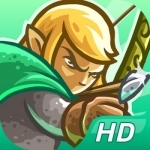
Kingdom Rush Origins HD
Games and Entertainment
App
***Best Mobile Game 2015 DICE Nominee*** The most addicting tower defense game returns in an...
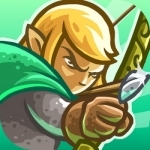
Kingdom Rush Origins
Games and Entertainment
App
***Best Mobile Game 2015 DICE Nominee*** The most addicting tower defense game returns in an...

This War of Mine: The Board Game
Tabletop Game
This War Of Mine: The Board Game is the tabletop adaptation of the award-winning video game that...
